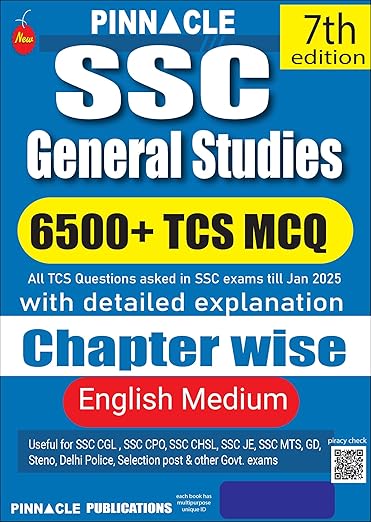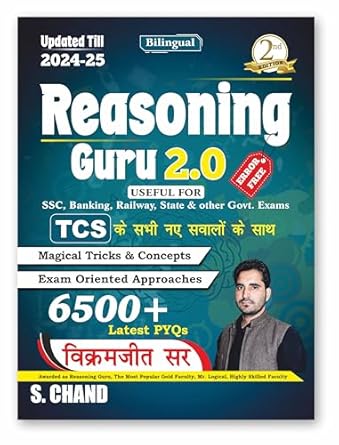- Bus Shelter
- Uses of Water
- Soft and hard water
- Travel
- Railways
- Important Indian Places
- Important Towns on Rivers
- Highest and Smallest in India
Shelter, Water and Travel - Syllabus and Study Material
Definitions of Shelter
- A structure that provides privacy and protection from danger.
- Protective covering that provides protection from the weather.
- Temporary housing from homeless or displaced persons.
- Space provided as shelter after digesters like earthquake.
- Shelter covers or defends from injury or annoyance, a protection screen.
Bus Shelter: A covered Structure at a bus stop providing protection against the weather for people waiting for a bus.
A human shelter is a structure or a natural feature that provides protection against bad weather, danger or inspect pests. The first shelter made by human being were made of animal hides, stones, straw, vines or wood.
Now these days we construct our shelters from a wide variety of materials such as wood and brick, steel and concrete, aluminium glass, plastic. The type of shelters people depend mainly on the climate, the material that are available and their intended use.
Houses are the most common shelter for people, but there are many other different kinds. Others include bus shelters, bomb shelters, band shells and tree houses. Portable shelters include tents, trailers, house boats, motor yachts and even motor homes. Other shelters like barns and sheds are built to cover and protect things besides people.
Animals live in a variety of different kinds of shelters from holes in the ground to caves, to nests and trees.
Igloo: This is a snow house. Seen in arctic regions. It is a traditional shelters.
Caves: Primitive men and animals lived in caves or caverns. These are seen both on mountains and along seasides.
Huts: These are small crude shelters. Mostly made of natural and locally available materials. Now a days we can see such huts on remote tribal areas only.
Tree houses: These are seen in forests for protection from animals. It made among the branches of mature trees.
House boats: These are modified boats for human dwelling. It’s either moored or motorized in Kerala, house boats used for leisure trips are locally called Kettuvallams.
Water
Water Chemical formula:  (Hydrogen oxide) page no 7
(Hydrogen oxide) page no 7
Molecular Mass: 18 u
Structure of water

About 70% of our body weight is water.
Pure water has a neutral pH of 7, which is neither acidic nor basic.
70-75% of the earth surface is covered with water.
A healthy person can drink about three gallons (48 cups) of water per day.
Water vapours enters the air or atmosphere through the two main processes i.e., Evaporation and transpiration.
Water is essential for the survival and growth of plants and animals.
Uses of Water
- Water is used in industries for producing almost all the things we use.
- It is a good medium for the transportation of people and goods by boats and ships.
- Water is used in radiators of vehicles to keep their engines cool.
- Water provides a medium for recreational sports such as swimming, boating and water skiing.
- Water is used for generating, electricity in a hydroelectric power plant.
Water for living organisms: Water is essential for every living being. It plays an important role in a large number of life processes. Water is a good solvent. The nutrients and salt present in our food get dissolved in water so that our body is able to absorb them easily.
It dissolves the waste materials of the body, which are expelled as urine.
Water regulates the temperature of our body for the process of sweating.
Water helps in the germination of seeds and growth of plants.
Water helps in preparation of good by plants in the process of photosynthesis.

Water dissolve the nutrients in the soil that can be easily absorbed by the roots of plants. It also act as a medium for the transport of minerals and other nutrients from one part of the plant to another.
Sources of Water
1. Surface Water: Surface water is present on the surface of the earth.
- Rain Water: Rain water is considered to be the purest form of natural water because it is usually free from any impurities.
- River and Lake Water: The water in rivers and lakes cames from rain and melting of snow on the mountains. It may contain dissolved slat and germs that causes dangerous diseases like jaundice, dysentery, cholera and typhoid.
- Sea Water: See water contains about 3.6% by mass of dissolved salt. It is also called as saline water.
2. Underground Water or Subsoil Water: Some of the rain water that falls on earth seeps through the soil and goes down under the surface of the earth.
This reservoir of water collected over the hard non-porous rock below the surface of the earth is called ground water or underground water. The level of ground water is called water table. Groundwater is pumped out by digging wells deep till it reaches the water table.
Different States of Water

Transpiration: Plants also need water to grow. They take this water from the soil through their roots. The excess water is released by plants into the air as water vapour through stomata. This process is called transpiration.
Water Cycle: It is defined as a continuous movement of water from the earth’s surface and water bodies as water vapour to the atmosphere and from the atmosphere back to the earth’s surface as rain, hail or snow.
Soft and hard water
The water which produce large amount of leather with soap is known as soft water and which forms a scum with soap is known as hard water. Temporary hardness in water is due to the presence of bicarbonates of calcium and magnesium. It can be removed easily be boiling. Permanent hardness in water is due to the presence of chlorides and sulphates of calcium and magnesium. It can be removed by using washing soda.
Heavy Water  : It was discovered by Urey, who showed that ordinary water contains one part of heavy water in 600 parts of it. It is used as tracer compound and as moderator in nuclear reactors.
: It was discovered by Urey, who showed that ordinary water contains one part of heavy water in 600 parts of it. It is used as tracer compound and as moderator in nuclear reactors.
Water Crises – Reasons:
- Increase in population
- Excessive use of water resources
- Water pollution by industries
Travel
Travel is movement of people between relatively distant geographical locations for any purpose and any duration, with or without any means of transport. Travel also includes relatively short stays between successive movements.
Purpose of travel includes recreation or tourism research for the gathering of information, for holiday to visit people, volunteer travel for charity or migration to begin life somewhere else.
Motives of travel include relaxation, discovery and exploration, interpersonal relationship and getting to know other cultures.
Travel may be local, regional, national (domestic) or internation.
Travel may occur by human-powered transport such as public transport, automobiles, trains and airplanes.
Road Transport
India has one of the largest road networks in the world [3..32 million km].
Roads are classified into six classes according to their importance:
- Golden quadrangle Superways
- National highways
- State highways
- Boarder roads
- Major district roads
- Rural roads (including other district roads).
Roads density: The length of road per 100 sq. km. of area is known as density of road.
- Lowest – Jammu and Kashmir (10 km)
- Highest – Kerela (375 km)
NH – 7 is the largest highway of India [Varanasi-Kanyakumari]
Railways
Railways transport begins in April, 1853, when the first railway train steamed off from Mumbai to Thana [34 km Stretch]
Indian railways in Asia’s largest and world’s fourth largest railway system.
Oldest running locomotive in world: Fairy Queen. World’s longest railway platform: Kharagpur Station (833 mt).
Shortest named station: IB
Longest run in terms of distance and time: Himsagar Express between Kanyakumari & Jammu Tawi Covering 3475 km. In about 74 hours and 55 minutes.
Fastest train in India: Bhopal Shatabadi Express (having maximum speed of 140 km/h).
Indian Railway comprises three gauges.
- Broad Gauge (1676 mm)
- Metre Gauge (1000 mm)
- Narrow Gauge (762 mm and 610 mm)
Konkan railways project is 760 km long broad gauge line from Doha to Mangalore.
Railways Zones |
|
| Name of the Zones | Headquarters |
| Northern Railways | New Delhi |
| Western Railways | Mumbai-church gate |
| South Central Railway | Secunderabad |
| South East Railway | Kolkata |
| Central Railway | Mumbai V T |
| South Railway | Chennai |
| North-East Railway | Gorakhpur |
| East Railways | Kolkata |
| North-East Frontier Railway | Maligaon (Guwahati) |
| East central Railway | Hazipur |
| North Western Railway | Jaipur |
| East-Coast Railway | Bhubaneshwar |
| North-Central Railways | Allahabad |
| South Western Railway | Hubli |
| Western Central Railway | Jabalpur |
| South East Central Railway | Bilaspur |
Air Transport: Airport Authority of India (AAI) provides safe efficient air traffic in India. The authority manages 12 international and 89 domestic airports.
Nicknames of Important Indian Places |
|
| Nick name | City |
| Golden city | Amritsar |
| Manchaster of India | Ahmedabad |
| City of seven Islands | Mumbai |
| Garden city of India | Bangaluru |
| Electronic city of India | Bangaluru |
| Pink City | Jaipur |
| Gateway of India | Mumbai |
| Twin City | Hyderabad |
| City of Nawabs | Lucknow |
| Venice of the East | Kochi |
| Hollywood of India | Mumbai |
| Steel City of India | Jamshedpur |
| City of temples | Varanasi |
| Heaven of India | Jammu & Kashmir |
| Garden of spices of India | Kerala |
| City of lakes | Srinagar |
Important Indian Towns on Rivers |
|
| Town | River |
| Allahabad | At the confluence of the Ganga and Yamuna |
| Varanasi | Ganga |
| Agra | Yamuna |
| Delhi | Yamuna |
| Ludhiana | Satluj |
| Srinagar | Jhelum |
| Lucknow | Gomti |
| Ayodhya | Saryu |
| Ahmedabad | Sabarmati |
| Kota | Chambal |
| Jabalpur | Narmada |
| Panji | Mandavi |
| Ujjain | Kashipra |
| Surat | Tapti |
| Kolkata | Hooghly |
| Vijayvada | Krishna |
| Tiruchirapalli | Cauvery |
Largest, Longest, Highest and Smallest in India
| Highest mountain peak – Godwin Austin (K 2) |
| Longest lake (fresh water) – Wular Lake |
| Highest Dam – Bakhra dam |
| Largest Mosque – Jama Masjid |
| Longest Mosque – Hirakud Dam (Orissa) |
| Longest Bridge – PVNR Expressway, Hyderabad (11,600 m) |
| Longest River Bridge – Mahatma Gandhi Setu, Patna |
| Largest populated City – Mumbai (1.60 crore) |
| Largest Museum – National Museum, Kolkata |
| Largest Zoo – Zoological gardens, Alipur, Kolkata |
| Largest man-made lake – Nagarjuna Sagar Dam |
| Largest Desert – Thar (Rajasthan) |
| Highest Tower – Pitampura Tower, Delhi |
| Smallest State (Area) – Goa |
| Smallest State (Population) – Sikkim |
| Highest Waterfall – Gersoppa waterfall (Karnataka) |
| Densest populate State – West Bengal |
| Largest animal Fair – Sonepur (Bihar) |
| Highest Gateway – Buland Darwaza, Fatehpur Sikri (Agra) |
| Biggest Hotel – Oberai- Sheraton (Mumbai) |
| Largest State (Area) – Rajasthan |
| Largest State (Population) – Uttar Pradesh |
| Place of heaviest rainfall – Mausinram (Meghalaya) |
| Largest Stadium – Sall lake (Yuva Bharti), Kolkata |
| Largest Port – Mumbai |
| Highest Lake – Devatal (Garhwal) |
| Largest Lake (saline water) – Chilka lake, Orissa |
| Highest Award – Bharat Ratna |
| Highest Gallantry Award – Paramveer Chakra |
| Largest Gurudwara – Golden Temple, Amritsar |
| Deepest river valley – Bhagirathi & Alaknanda |
| State with longest coastine of South India – Andhra Pradesh |
| Longest Beach – Marina Beach, Channai |
| Highest Battle Field – Siachin Glacier |
| Highest Airport – Leh (Laddakh) |
| Largest river island – Mujuli (Brahmaputra river) |




0 Comments